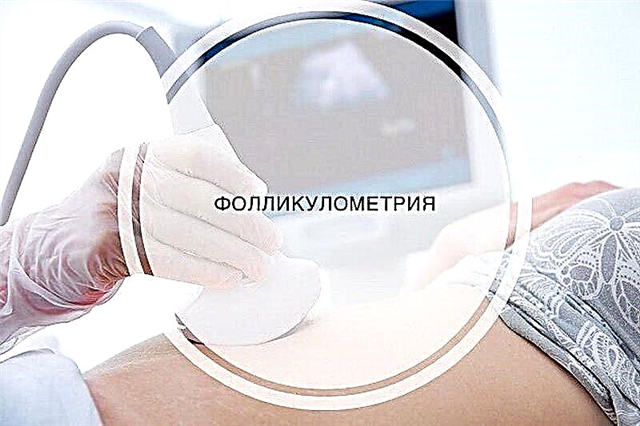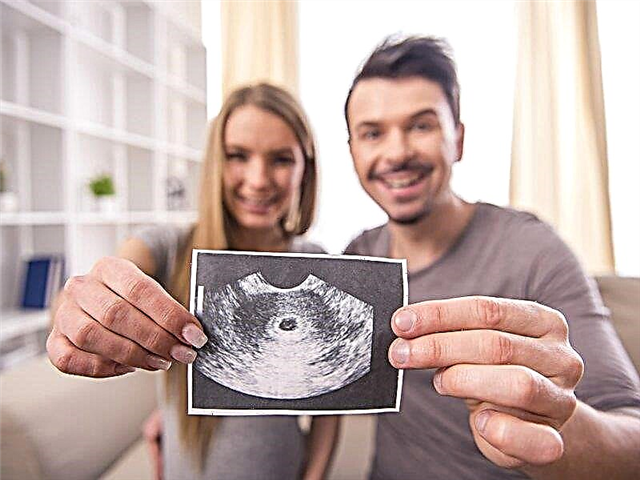
Normally, the muscles of the uterus remain relaxed, calm throughout pregnancy, and only with the onset of labor does a physiological tone appear, which accompanies each labor contraction. The appearance of tone in the process of carrying a baby can be associated with training contractions, but the tone in this case is short-lived and does not affect the condition of the fetus. If hypertonicity is detected in the second trimester of pregnancy as a long-term condition, this cannot be considered the norm.
What it is?
Increased excitability of the smooth muscles of the uterus is called tone or hypertonicity. Calm and relaxed three layers of the uterine walls are the key to normal bearing of the fetus until childbirth. Then, under the influence of oxytocin, the myometrium begins to contract during the opening of the cervix - this is labor pains.

The tone in the second trimester is too early for labor. Therefore, the condition is referred to as pathological. An exception is false contractions, which may appear in primiparous after 20 weeks of pregnancy. They are manifested by short-term infrequent tension of the uterus, which lasts from several seconds to several minutes, after which the uterus relaxes.
The increased tone of the uterus is mainly associated with hormonal changes or any unfavorable psychological, emotional, psychophysiological factors.
Most often, women who at the time of pregnancy have not reached the age of 18-19, as well as women over 34, complain about the tone of the uterus during pregnancy. Early pregnancy at a too young age proceeds against the background of underdevelopment of the genital area and insufficient readiness of the reproductive organ for bearing a child. Pregnancy at the age of 34 has its own characteristics, and women at this age often approach with several abortions in the anamnesis, the presence of infectious or inflammatory diseases in the present or the past, and difficult childbirth in their personal medical history.

Let's figure out if the tone is dangerous in the second trimester. It is no less dangerous than in the first, because it is a real threat to the life and health of the child, it can cause the development of oxygen starvation, late miscarriage in the 2nd trimester, and also a trigger for premature birth. There is evidence that prolonged and severe hypertonicity increases the likelihood of stillbirth, intrauterine fetal death.
How does it arise and why does it develop?
From the very beginning of pregnancy, the hormone progesterone is produced in high concentrations in a woman's body. Its main task is to soften the myometrium of the uterus, to maintain it in a relaxed state. In most cases, hypertonicity occurs with a reduced level of progesterone, an insufficient amount.

A reduced level of progesterone increases the sensitivity of the uterine receptors, and its contractile ability increases. A critical lack of pregnancy hormone leads to miscarriages, severe fetal hypoxia and death.
An uncritical decrease is also felt by the female body, and the female reproductive organ is the first to respond to the lack of a substance important for the successful course of pregnancy - an increased tone occurs.
Studies have shown that hypertonicity most often develops in the second trimester in women with hyperandrogenism - increased production of male sex hormones in the female body. And also the tone is found in women with a high content of the hormone prolactin, this condition is called hyperprolactinemia.
The root cause of the high tone of the myometrium can be any hormone-dependent disease that the expectant mother could have long before pregnancy. Such diseases include uterine fibroids, endometriosis.


With tension in the second trimester, the myometrium can react to the processes of rapid growth of the uterus and fetus, as well as if a woman has previously had inflammatory gynecological ailments. Muscle tone can also be impaired due to disturbances in the functioning of the central nervous system, which regulates the tone of all muscles in the body, including the smooth muscles of the female reproductive organ. Due to malfunctions in the central nervous system, an increased uterine tone usually develops in pregnant women who carry twins or triplets, suffer from polyhydramnios, or carry a large fetus. In this case, the muscles of the uterus are overstretched, and the central nervous system often cannot adequately regulate the state of muscle tissue.
And also hypertonicity in the second trimester are subject to:
- women with thyroid pathologies;
- expectant mothers who have had viral infections in the first trimester;
- working the night shift, hazardous work, lack of sleep, often nervous women;
- experiencing prolonged chronic stress, worried about any reason, impressionable ladies prone to depression;
- suffering from bad habits.

Symptoms and Signs
Any part of the myometrium can be tense. The tone of the uterus does not mean that it is all tense. Therefore, at the place of stress, two degrees of uterine hypertonia are distinguished. The first degree is tension only on the back wall of the organ, and women usually do not feel such a tone. Only specialists can install it during ultrasound diagnostics.
By the end of the second trimester, the increased tone of the female reproductive organ of the first degree can be felt by slight stretching in the lumbar region, the pain is not acute and is mainly given to the back, to the sacrum. There are no other manifestations.
Second-degree hypertonicity is tension in the anterior part of the myometrium, and usually this tone is richer in signs and symptoms: a woman may experience pulling pains in the lower abdomen, they are very similar to pain during menstruation. Sometimes painful sensations extend to the perineum and to the external genitalia. The woman begins to go to the toilet more often for "little need".

The abdomen becomes more rigid, it is located slightly higher than normal for a healthy pregnancy. It is not difficult for an experienced obstetrician to determine the hypertonicity of the uterus through the anterior abdominal wall during a routine examination.
The lower segment of the uterus is extremely rare. Usually this is noted only in women who have previously suffered a cervical injury.
Diagnostic issues
The detection of an increased uterine tone in the second trimester of pregnancy is a very alarming symptom, which neither the doctor nor the patient should underestimate. If the gestational age has not reached 22 weeks, the doctor will suspect a threat of late miscarriage, and after 22 weeks will warn the patient about the high risk of premature birth. The further prognosis for the mother and fetus will depend on how quickly the tone is detected, as well as on the treatment performed.

Tonus can become a find at the most common examination, which a woman visits every two weeks in the middle of pregnancy. When feeling the abdomen (palpation), the doctor will definitely pay attention to the altered shape of the abdomen and its rigidity up to the so-called stone state.
The woman will undergo an ultrasound scan, this is mandatory if hypertonicity is suspected. This study will help to find out which part of the muscles of the uterus is subject to contraction and overexcitation. It is very important to assess the tone of the uterus at the placenta insertion. If the area of tension is under it or next to it, then placental abruption is not excluded. On the monitor of an ultrasound scanner, hypertonicity looks like a thickening of the walls of the uterus.

Correct actions
To preserve the pregnancy, if hypertonicity is detected, the expectant mother is recommended to bed or semi-bed rest. This means that you need to leave everything, take a sick leave from the obstetrician-gynecologist and just lie down at home. It is important to exclude stress, lack of sleep, any physical activity, so as not to aggravate the situation. If the tone is small, the doctor will be able to allow treatment at home with the obligatory observance of all recommendations by the pregnant woman.
With severe hypertonicity of the second degree in the second trimester, they can offer hospitalization in order to carry out treatment in a hospital under the vigilant supervision of doctors.
Do not rush to refuse, because the life of a baby is more expensive than current household chores, and in a home environment it is not always possible to get rid of stress, especially if the cause of stress lies in the family.
Hospitalization is definitely indicated for:
- the appearance of spotting bleeding from the genital tract against the background of second-degree hypertonia;
- the appearance of scarlet blood from the genital tract (a likely sign of placental abruption);
- with severe symptoms and discomfort.
First of all, doctors will need to establish whether the expectant mother has enough progesterone. Blood tests for hormones will help to understand this issue. If the concentration is insufficient, progesterone-based drugs will be prescribed - "Duphaston", "Utrozhestan" and others.

If a biochemical blood test of a pregnant woman shows a lack of magnesium in her body, she is prescribed magnesium preparations in tablets or capsules, or "Magnesia" (magnesium sulfate) is injected if the woman is treated in a gynecological hospital.
A woman is shown taking antispasmodic drugs - "No-shpa", "Papaverine", both in the form of tablets, injections, and in the form of rectal suppositories (for papaverine). The woman is prescribed and sedatives, which will help to calm down faster and put in order the emotional sphere - motherwort, valerian (at the discretion of the doctor). Chemical sedatives are excluded, a woman in the second trimester is shown only herbal sedatives. Cherry on the cake in the treatment regimen are usually present multivitamins - in the second trimester they are highly recommended.
If a state of serious hypertonicity occurs before 34 weeks of pregnancy (and this is the entire second trimester and half of the third), then the woman is recommended to administer drugs with tocolytic action - the means traditionally used to stop premature birth. These include "Ginipral", "Fenoterol", "Salgim", "Indomethacin" and others). If it is not possible to reduce the tone, doctors will try to do everything possible to keep the pregnancy as long as possible.


It is tocolytics that will give the opportunity to buy a little time to start injecting a woman with "Betamethasone" - a substance that accelerates the maturation of fetal lungs. If it is already becoming clear that childbirth will be premature, then such injections will increase the child's chances of survival after birth - without a surfactant in the baby's lungs, a distress syndrome awaits and the inability to take independent breaths.
Forecasts
Despite the description of the rather dire consequences of hypertonia, in practice the forecasts are usually assessed as quite favorable. If medical assistance is provided in a timely manner, then in 99% of cases it is possible to relieve the increased excitability of the uterine muscles in time and prolong the pregnancy not only until the expected date of birth. Often, women who underwent hypertonicity in the middle of pregnancy and received treatment, postpone the child and give birth only at 42-43 weeks.
Experts believe that pregnancy is prolonged "on a nerve basis" - the more a woman worried about the safety of pregnancy, the more chances she has for a psychogenic prolonged pregnancy.
If a woman refuses treatment and hospitalization, no one will give predictions, because no one can predict how the woman's central nervous system and uterine smooth muscles will behave.
There are times when, due to the tone against the background of stress, only the elimination of the stress factor helps a woman. And it is also possible that the tone persists for a long time, which will increase the chances of fetal hypoxia, in which its brain, heart function may suffer, and intrauterine growth retardation may develop.

For more on the symptoms of uterine tone during pregnancy, see the next video.



